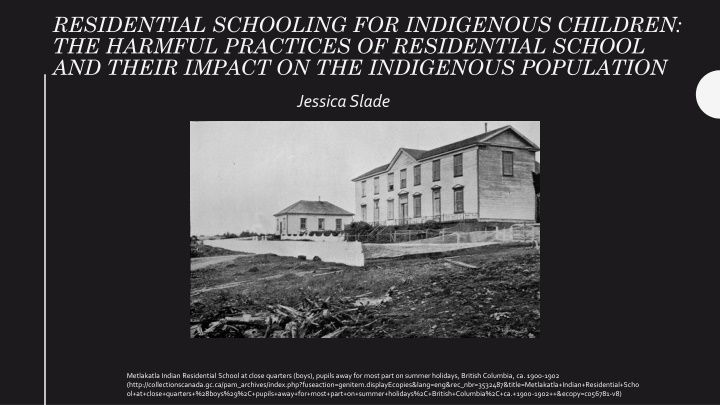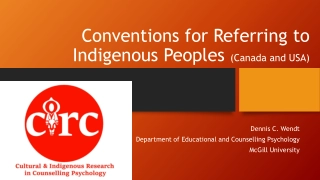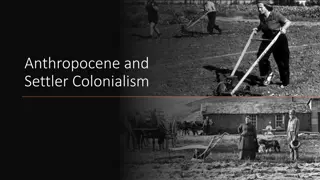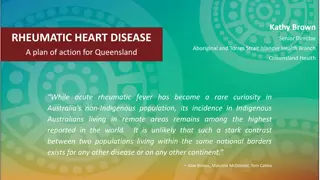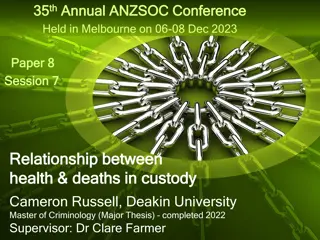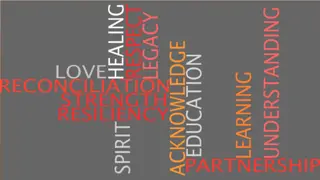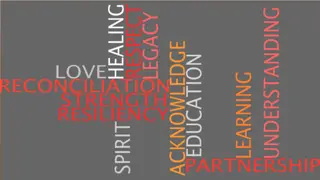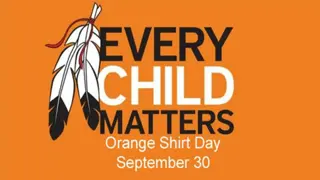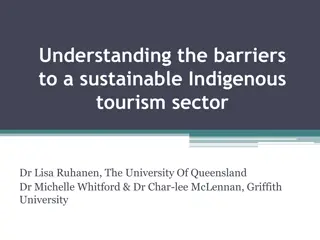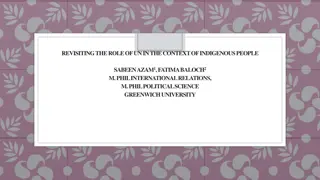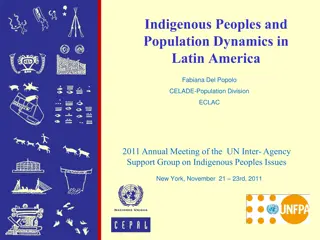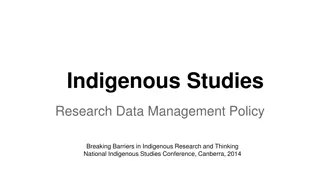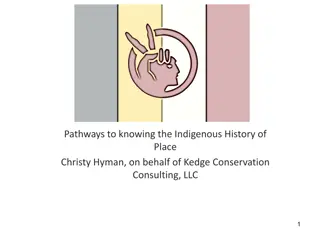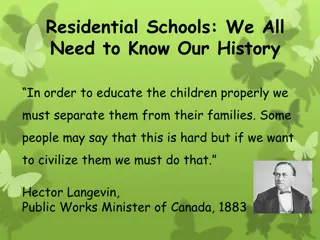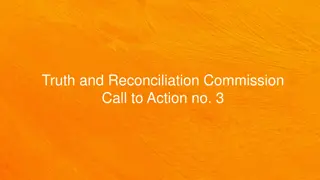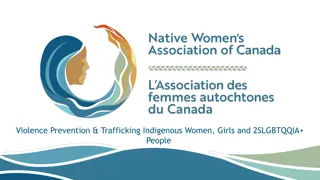Impact of Residential Schools on Indigenous Children
Residential schools, operating between 1870 and 1990, inflicted deep scars on Indigenous children aiming for assimilation. The negative experiences included inferior education, abuse, loss of culture, and mental health challenges. Despite some reforms, the trauma lingers, affecting families and communities to this day.
Download Presentation

Please find below an Image/Link to download the presentation.
The content on the website is provided AS IS for your information and personal use only. It may not be sold, licensed, or shared on other websites without obtaining consent from the author.If you encounter any issues during the download, it is possible that the publisher has removed the file from their server.
You are allowed to download the files provided on this website for personal or commercial use, subject to the condition that they are used lawfully. All files are the property of their respective owners.
The content on the website is provided AS IS for your information and personal use only. It may not be sold, licensed, or shared on other websites without obtaining consent from the author.
E N D
Presentation Transcript
RESIDENTIAL SCHOOLING FOR INDIGENOUS CHILDREN: THE HARMFUL PRACTICES OF RESIDENTIAL SCHOOL AND THEIR IMPACT ON THE INDIGENOUS POPULATION Jessica Slade Metlakatla Indian Residential School at close quarters (boys), pupils away for most part on summer holidays, British Columbia, ca. 1900-1902 (http://collectionscanada.gc.ca/pam_archives/index.php?fuseaction=genitem.displayEcopies&lang=eng&rec_nbr=3532487&title=Metlakatla+Indian+Residential+Scho ol+at+close+quarters+%28boys%29%2C+pupils+away+for+most+part+on+summer+holidays%2C+British+Columbia%2C+ca.+1900-1902++&ecopy=c056781-v8)
Why? Offers the opportunity to study something different Availability of sources To increase acknowledgement of the treatment of Indigenous peoples within residential schools Importance of understanding how your school experience can shape the person you become in the future Group of students at Alert Bay Mission School, British Columbia, 1885 (http://collectionscanada.gc.ca/pam_archives/index.php?fuseaction=genitem.di splayEcopies&lang=eng&rec_nbr=3194035&title=Group+of+students+at+Alert+ Bay+Mission+School%2C+British+Columbia%2C+1885++&ecopy=a037934)
Background Residential schools operated between 1870 and 1990, the last being closed in 1996 Indian act of 1876 required the government to provide Indigenous youth with an education and to integrate them into Canadian society. Operated by Churches/Religious Institutions General experience was overwhelmingly negative Attempt to assimilate the children into mainstream society Brought up for Inferiority Failed to provide adequate education, which only began to change in the 1950 s. Students attending the Metlakatla Indian Residential School, British Columbia, date unknown (http://collectionscanada.gc.ca/pam_archives/index.php?fuseaction=genitem.displayEco pies&lang=eng&rec_nbr=3194929&title=Students+attending+the+Metlakatla+Indian+Re sidential+School%2C+British+Columbia%2C+date+unknown++&ecopy=c015037-v8)
Did By 1951, the half day work school system was abandoned Residential schools change over Amendments to the Indian Act Indigenous children were allowed to live with their parents wherever possible More qualified teachers were hired 1969 DIA took schools over from the churches, ending church involvement time? Phasing out of segregation and incorporation of Indigenous children into public schools Didn t prevent abuse in schools Still had unqualified/poorly qualified teachers
Main Ideas Residential School Practices Impacts of Residential schooling Forced assimilation Alcohol and drug abuse Removal of Indigenous culture Suicide Physical, mental and sexual abuse Suffered Racism in mainstream society Underfunding Chronic Depression Lack of Care Dysfunctional families and relationships Punishment Low self-esteem and confidence
Bibliography Barman, Jean. Schooled for Inequality: The education of British Columbia Aboriginal children. Schooling in Transition. Readings in Canadian history of education. University of Toronto Press. Toronto Buffalo London. 2012. Barnes, Rosemary, and Nina Josefowitz. Indian Residential Schools in Canada: Persistent Impacts on Aboriginal Students Psychological Development and Functioning. Canadian Psychology/Psychologie Canadienne, July 5, 2018. Battiste, Marie. Enabling the Autumn seed: Toward a decolonised approach to Aboriginal Knowledge, Language and Education. Schooling in Transition. Readings in Canadian history of education. University of Toronto Press. Toronto Buffalo London. 2012. Canada s Residential Schools: The Final Report of the Truth and Reconciliation Commission of Canada. McGill-Queen s Native and Northern Series: 80-86. Montreal; Kingston; London ; Chicago : Published for The Truth and Reconciliation Commission of Canada by McGill-Queen s University Press, 2016-, 2016. Daniella Zalcman. Kill the Indian, Save the Man : On the Painful Legacy of Canada s Residential Schools, no. 3 (2016): 72-85 Duke University Press, 2016 David B. MacDonald, and Graham Hudson. The Genocide Question and Indian Residential Schools in Canada. Canadian Journal of Political Science / Revue Canadienne de Science Politique 45, no. 2 (2012) Feir, Donna L. The Long-Term Effects of Forcible Assimilation Policy: The Case of Indian Boarding Schools. Canadian Journal of Economics 49, no. 2 (May 2016): 433 80. http://data2.archives.ca/e/e444/e011080292-v8.jpg (primary source picture) Intergenerational Impacts of Residential Schools (http://www.rcmp-grc.gc.ca/aboriginal-autochtone/lp-pl/doc/2res-school-9-12-pen-indiens-9-12-oh3-eng.pdf) Library and Archives Canada, NORTH BLACKFOOT AGENCY - GENERAL CORRESPONDENCE RELATING TO THE OLD SUN'S DAY SCHOOL AND IT'S CLOSING. , Accessed 11th February 2019, http://www.collectionscanada.gc.ca/lac- bac/results/arch?form=arch_simple&lang=eng&FormName=MIKAN+Simple+Search&PageNum=1&SortSpec=score+desc&HighLightFields=title%2Cname&Language=eng&QueryParser=lac_mikan&Sources= mikan&Archives=&SearchIn_1=&SearchInText_1=residential+school+records&Operator_1=AND&SearchIn_2=&SearchInText_2=&Operator_2=AND&SearchIn_3=&SearchInText_3=&Media%5B%5D=800&Lev el=&MaterialDateOperator=after&MaterialDate=&DigitalImages=1&Source=&cainInd=&ResultCount=10 Loyie, Larry, Wayne K. Spear, and Constance Brissenden. Residential Schools: With the Words and Images of Survivors. Brantford, Ontario: Indigenous Education Press, 2014., Milloy, John Sheridan, and Mary Jane McCallum. 2017. A National Crime: The Canadian government and the residential school system. Vol. Anniversary Edition. Critical studies in Native History. Winnipeg, Manitoba: University of Manitoba press. Report on Native Education (1847) (http://projectofheart.ca/historical-documents/) School Files Series - 1879-1953 (RG10) (http://www.collectionscanada.gc.ca/numerisation-microforme/006003-119.01 e.php?q2=2&q3=109&sqn=53&tt=2171&PHPSESSID=vuurgnbn4tsa636na4ig4lfg81)
Additional Readings Library and Archives Canada, NORTH BLACKFOOT AGENCY - GENERAL CORRESPONDENCE RELATING TO THE OLD SUN'S DAY SCHOOL AND IT'S CLOSING. , Accessed 11th February 2019, http://www.collectionscanada.gc.ca/lac- bac/results/arch?form=arch_simple&lang=eng&FormName=MIKAN +Simple+Search&PageNum=1&SortSpec=score+desc&HighLightFiel ds=title%2Cname&Language=eng&QueryParser=lac_mikan&Source s=mikan&Archives=&SearchIn_1=&SearchInText_1=residential+scho ol+records&Operator_1=AND&SearchIn_2=&SearchInText_2=&Ope rator_2=AND&SearchIn_3=&SearchInText_3=&Media%5B%5D=800 &Level=&MaterialDateOperator=after&MaterialDate=&DigitalImag es=1&Source=&cainInd=&ResultCount=10 Wagamese, Richard. Indian Horse : A Novel. Vancouver : Douglas & McIntyre, 2012., 2012. CBC, In their own words Accessed 16th March 2019, https://newsinteractives.cbc.ca/longform/residential-school- survivors Daniella Zalcman. Kill the Indian, Save the Man : On the Painful Legacy of Canada s Residential Schools, no. 3 (2016): 72-85 Duke University Press, 2016
Intergenerational consequences Conclusion Severe damage on the indigenous peoples from the practices Forced to believe they were an inferior class Did nothing to improve their social standing Reviews of the institutions are negative
